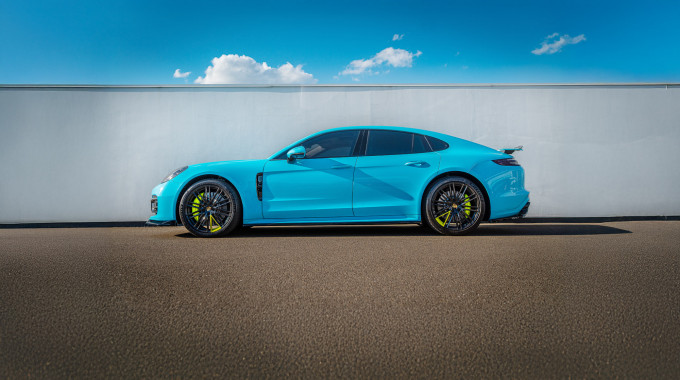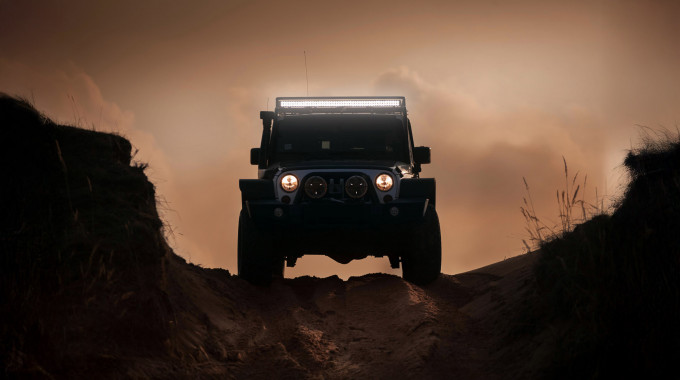
Car Safety Features [Part 4]: Safety Looks Ahead
Almost every system on your vehicle is interconnected with others, and that can be an advantage for automakers and drivers alike. In some cases, systems that were originally just for convenience can be adapted to include higher-tech safety features, or vice versa.
Adaptive cruise control, for example, is meant to keep you at a safe distance from the vehicle in front, but also makes driving more comfortable and less tiring. It also shares some of its technology with emergency front braking, which can help prevent you from running into the vehicle in front.
A large number of vehicles now offer one or both of these features, even in the lower-priced range. Another “looking ahead” feature, night vision, is available on some higher-end vehicles, helping you see what’s ahead in the dark. Here’s what these features are, and how they work.
Adaptive Cruise Control
Adaptive cruise control can go by various names, including automatic, dynamic, active cruise control, or others. These systems can differ in how they work, and the name doesn’t necessarily indicate it. When you’re buying a vehicle, be sure you know exactly what you’re getting before you sign.
Non-adaptive cruise control vs adaptive cruise control
Many vehicles still come only with regular, non-adaptive cruise control. When you set it, it only maintains that speed. If you’re coming up to slower-moving traffic, it’s up to you to slow down.
Adaptive cruise control takes care of that. Depending on the system, it uses radar, laser, cameras, or a combination to “look” for traffic ahead of it. If there isn’t any, it maintains the speed you’ve set. But if it determines there’s a car ahead going slower, it will also slow down to maintain a pre-set distance. If that car ahead goes faster, or moves out of the lane, the adaptive cruise then accelerates back to the set speed.
Not ideal when road conditions are less favourable
On virtually all of these systems, you can set that distance, usually by tapping a button on the steering wheel that activates a display in the instrument cluster. This lets you set a wider or narrower gap between your vehicle and a car ahead.
If the roads are wet or snowy, you should maintain a wider gap. If the weather is bad, you should leave the cruise control off entirely, and drive the car yourself according to the conditions.
Using low-speed cruise control in traffic
An increasing number of automakers are offering low-speed cruise control with stop-and-go. In traffic, when the car ahead stops, so does yours, and when the car ahead moves yours does too, while maintaining the set distance away from it. It’s a nice feature in a traffic jam, since you don’t have to constantly use the throttle and brake.
Here’s a quick demo from Ford on how this tech works with stop-and-go traffic:
Adaptive cruise control is continually becoming more sophisticated. Some systems are tied into the on-board navigation, and can automatically slow down to a safe speed if there’s a curve ahead. Some vehicles will change lanes by themselves, if it’s safe to do so, when you activate the turn signal.
However, no one currently sells a completely self-driving car, even if some let you take your hands off the wheel at times. These are assist systems, and you need to always pay attention.
Emergency Front Collision Warning and Braking
Like adaptive cruise control, these systems “look” ahead for obstacles. All of them will detect vehicles, and most can also identify pedestrians, cyclists, or motorcycles. A few can also detect large animals, such as moose or deer.
If the system detects that the gap is closing quickly and you’re not applying the brakes, you’ll initially get a warning. This can include a chime, a red light in the instrument cluster or projected on the windshield, or a vibration. Demonstrated in the photo below:

Photo: Mercedes-Benz
You’ll get only a head’s-up if your vehicle only has forward collision warning. If it also has emergency braking, and you haven’t hit the brakes by now, the vehicle does it for you. It might not be enough to prevent the collision entirely, especially if the road is wet or slippery, but it will slow you down to reduce the severity of the collision. It’s expected that, at some time in the future, emergency front braking may become mandatory on all new vehicles.
Some vehicles also have rear braking, which does the same thing, only in reverse. It’s meant for lower-speed situations, such as when you’re backing into a parking space, and will stop you if you’re about to hit a pedestrian, another car, or something solid such as a lamppost.
A few front braking systems use cameras at the top of the windshield, but many use sensors in the front grille. If these sensors get heavily coated in dirt or snow, they may stop working. If so, you’ll get a warning message in the instrument cluster that the system is inoperative. If possible, stop and clean the sensors so the system will work again.
Night vision
Near-infrared vs far-infrared displays
Found on some higher-end vehicles, night vision uses sensors to figure out what’s up ahead in the dark, using infrared light and sensors. The range can differ depending on the type of infrared used. Near-infrared displays almost everything and has a clearer image. Far-infrared only detects objects by their heat signatures, such as people or animals, but has longer range than near-infrared.

Photo: VW
The night vision displays like a video, in real time, in the instrument cluster or centre screen, as seen in the photo above equipped on a Volkswagen. If something is detected, such as a pedestrian walking on the road’s shoulder, the system will display a warning around it on the screen. If the night vision system is sophisticated enough, it may aim the headlights in that direction so the driver can see the person.
As with other systems, night vision is intended only as a driver assist. If you’re “overdriving your headlights,” meaning you’re going so fast that you won’t be able to stop in time if something appears in your lights, slow down.
More content about







